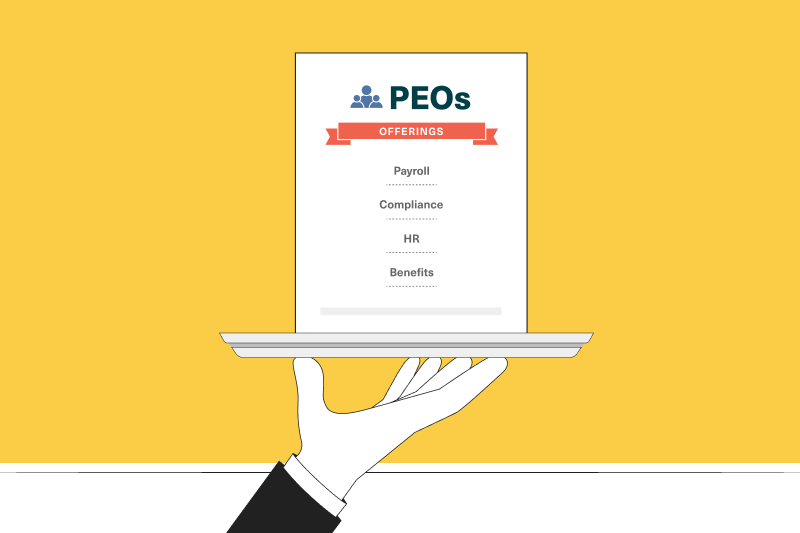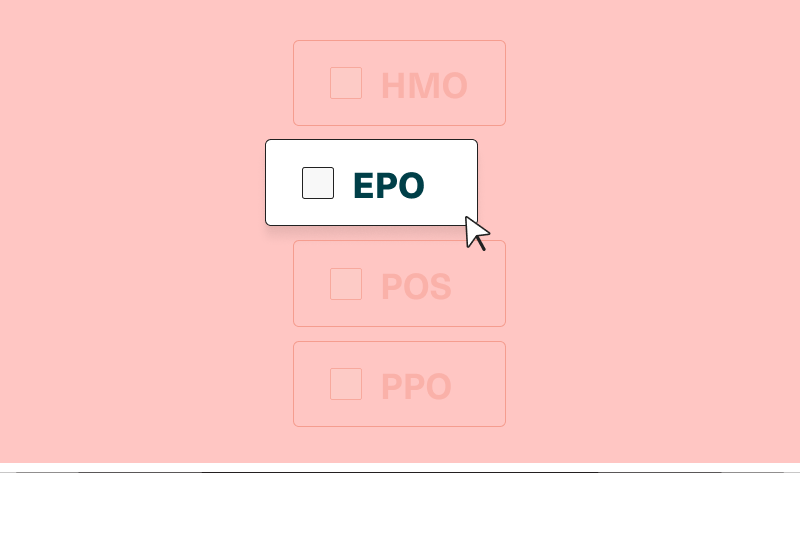Health Insurance 101: Stop Loss Insurance

Choosing the right insurance for your small business is a delicate balancing act. You want to provide stellar healthcare for your employees and their families, but you also need to protect your company from potentially catastrophic medical costs. Learn how stop loss insurance can allow you and your staff to enjoy the flexibility of self-funded health insurance while also safeguarding your business’s financial future.
What is stop loss insurance?
Stop loss insurance protects self-insured employers from unexpectedly high medical costs. The concept is simple: The insurance company agrees to reimburse the bills — thus “stopping the loss” — if a business’s employees have out-of-pocket healthcare costs that exceed a pre-established threshold. This insurance provides additional protection for small companies that want to minimize their financial risk without sacrificing their employees’ healthcare.
Understanding stop loss insurance
At first glance, stop loss insurance may seem unnecessary, especially if you only have a handful of employees. Understanding the purpose of stop loss insurance can help you make an informed decision.
Many small businesses consider this insurance a worthwhile investment because it can be challenging to accurately predict how much employees’ healthcare will cost in a given policy year. In an ideal world, your entire staff will stay healthy and only require routine healthcare, keeping expenses low. But unexpected medical issues can pop up anytime, and the costs can add up fast.
Here are a few scenarios that could lead to an unanticipated surge in healthcare costs:
- An employee’s new baby requires an extended stay in the neonatal intensive care unit.
- A staff member gets diagnosed with a rare form of cancer and needs treatment from specialists.
- An employee needs emergency surgery after an accident.
- A contagious disease infects most of the staff in your workplace.
Any of these situations could result in significant claims, potentially leading to serious financial troubles for a small business. Stop loss insurance prevents this by putting a cap on the amount of money a self-insured employer needs to pay for medical costs. For example, if a business has an attachment point of $10,000, the loss insurance company will start reimbursing all claims beginning at $10,001.
It’s important to note that stop loss insurance is a financial safeguard, not health insurance. That means loss insurance companies only reimburse employers for their expenses instead of paying the provider directly.
The pros and cons of a self-funded healthcare plan with stop loss insurance
An employer with a self-funded healthcare plan assumes financial responsibility for their employees’ healthcare. The business and covered members pay a set amount of money into a trust account, and these funds are used to pay claims for all employees.
If the claims in a given year add up to less than the collected amount, the employer can invest the money or roll it over into the account for the next year. But if the claims exceed the trust account, the employer must cover the excess amount through stop loss insurance or with their own money.
You may wonder why any small business would risk its financial security by selecting this type of plan. When paired with stop loss insurance, self-funded insurance is a safe option that has several advantages over traditional fully-funded plans, including:
- Accurate pricing: Self-funded health plans typically cost less for groups with lower-than-average healthcare expenses since they are not subsidizing more expensive groups.
- Flexibility: Small businesses have more freedom to customize their health plans to suit their staff’s needs.
- Potential rebates: The loss insurance company issues the employer a rebate if they have low claims.
- Tax breaks: Self-insured plans qualify for tax deductions from the federal and state governments, providing additional savings for employers and members.
However, self–funded insurance does have a few drawbacks, even with stop loss insurance, such as:
- Complexity: Putting together all the functions of a self-funded health plan can be time consuming. Luckily, some insurance companies have brought all the functions necessary — underwriting, plan administration, stop loss, network, and more — into a single offering.
- Accurate pricing: Groups with higher-than-average claims costs may pay more for self insurance than fully funded plans, since their rates are not being subsidized by less expensive groups.
Weighing these factors can help you choose the best health plan for your small business.
How stop loss insurance works
You can choose two types of stop loss insurance: specific and aggregate. Your employee demographics and risk tolerance can help you determine the right options; many groups choose both types of coverage.
Specific stop loss coverage
Specific — or individual — stop loss insurance protects employers from significant claims for any given individual. The insurance carrier will set a specific attachment point per employee based on the number of covered individuals, pre-existing conditions, and other factors.
Let’s say your company purchases specific stop loss coverage with a $50,000 attachment point per employee. Soon after, an employee gets seriously injured in a car accident and needs an expensive surgery and physical therapy. Their healthcare claims add up to $200,000. Your business must take responsibility for the first $50,000 in expenses, and the stop loss insurance company will refund you the additional $150,000.
However, specific loss insurance only applies to the specific employee who exceeds the attachment point. Imagine that you have a second worker who needs a $45,000 emergency surgery during that same policy period. Their claim doesn’t exceed the individual attachment point, so your company is on the hook for the full bill.
Specific stop loss insurance could be a strategic investment if you anticipate that only a few employees will have an unexpected health crisis during a policy year. For example, you may pick this coverage if you have a single older employee with pre-existing health conditions or a worker who plans to expand their family.
Aggregate stop loss coverage
By contrast, aggregate stop loss insurance limits the employer’s maximum liability across all covered workers. Generally, insurance companies calculate the business’s expected claims and set the attachment point at 125% of this total.
If an insurance company predicts that your business will have $1,000,000 in claims for the year, they could set your maximum claims liability at $1,250,000. That means you’re responsible for all claims up to that amount, and then the insurance company reimburses you any additional expenses — no matter which employees accrue them.
Aggregate stop loss coverage is particularly beneficial for medium- to large-sized companies that have many employees with significant healthcare expenses. For example, if you have 50 employees each requiring $30,000 in care, the stop loss company will reimburse all eligible costs after the total claims exceed your attachment point.
The benefit of stop loss insurance for small businesses
Stop loss insurance has many advantages for small businesses in particular, such as:
- Risk management: Minimize your financial risk by shielding your company from surprisingly high claims.
- Predictability: A set monthly fee makes it easy to plan your healthcare budget for the year because you always know the maximum amount of claims you’ll need to pay.
- Prioritize employee health: Your employees can access the healthcare they need without worrying about negatively affecting the company’s financial health.
- Customization: You can choose between specific and aggregate based on your business’s unique needs.
The role of Third-Party Administrators (TPAs) and stop loss insurance
A third-party administrator (TPA) is an external company that handles the daily operations of self-insured health plans. You can outsource most insurance-related tasks to a TPA, like creating custom health plans for your company and enrolling members. A TPA can also help you choose a stop loss plan and file claims with the insurance company.
Benefits of utilizing a TPA
Sana is a leading TPA that provides full-service plan management and claims processing for small businesses with self-funded insurance. When you partner with Sana, you’ll enjoy advantages like:
- Broker services for stop loss insurance
- Effortless employee onboarding throughout the plan year
- Plan compliance with all relevant laws
- Year-round claims monitoring
- Fair-value reimbursement to keep claims low
- Free access to Mineral, an integrated management software for human resources professionals
- Less time spent on tedious administrative tasks
You can learn more about how this service can improve your business’s operations and promote employee health by reading Sana’s comprehensive guide to TPAs. Or get in touch with Sana’s expert team to get personalized guidance as you weigh your insurance options.
Related: View Sana Benefits health insurance plans
Stop loss insurance FAQs
Self-insurance is a type of insurance plan that allows the employer to collect premiums from employees and directly pay for their health claims. A TPA like Sana is an administrative service that manages the day-to-day operations of a self-insurance plan. For example, a TPA helps employees add new babies to their self-insurance plan and maintains claims records.
Stop loss insurance reduces a business’s financial liability by reimbursing any medical expenses that exceed a predetermined attachment point. If an employer has a $20,000 attachment point, the stop loss insurance covers all employee health claims from $20,001 onward. The insurance company could base the employer’s maximum liability on an individual or collective basis, depending on the business’s preference.
Stop loss insurance is a risk management tool that protects small businesses from catastrophic healthcare claims. By contrast, coinsurance is the percentage of claims that members must pay after they reach their personal deductible.






